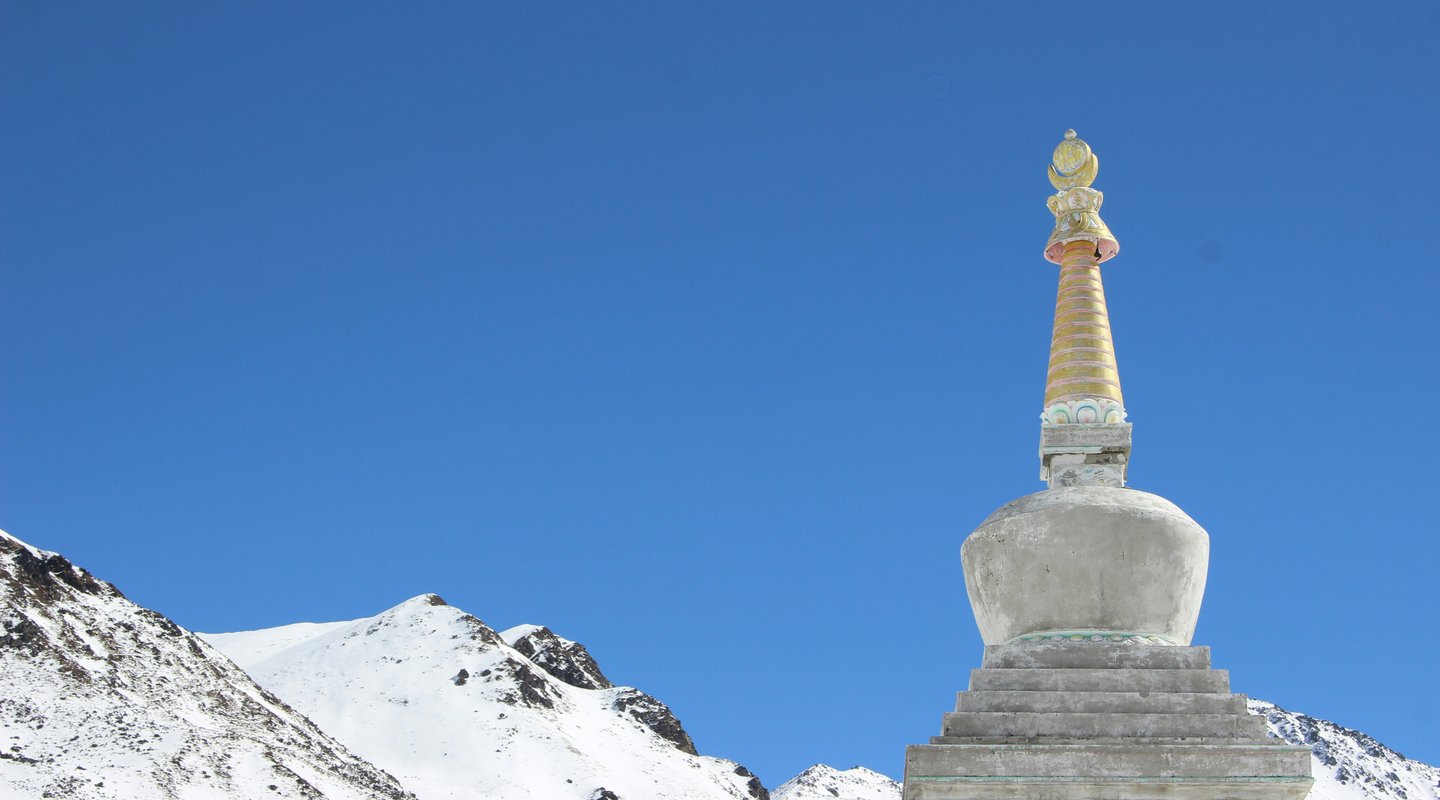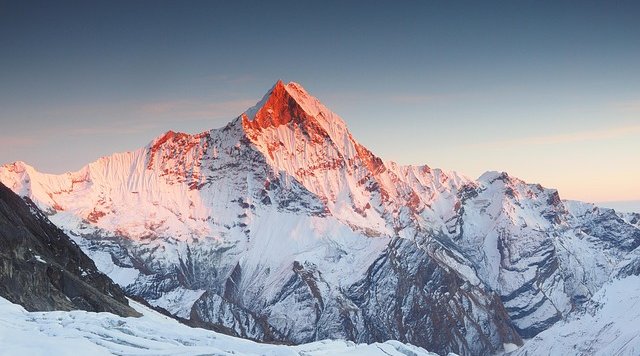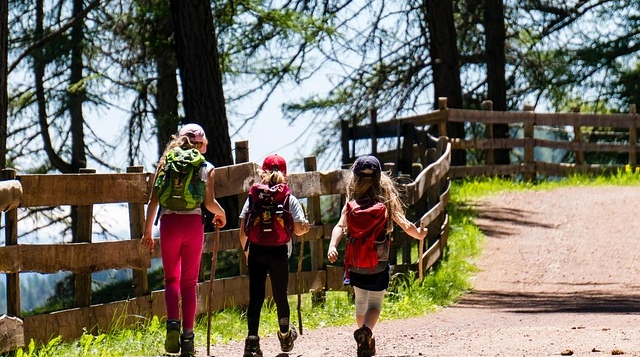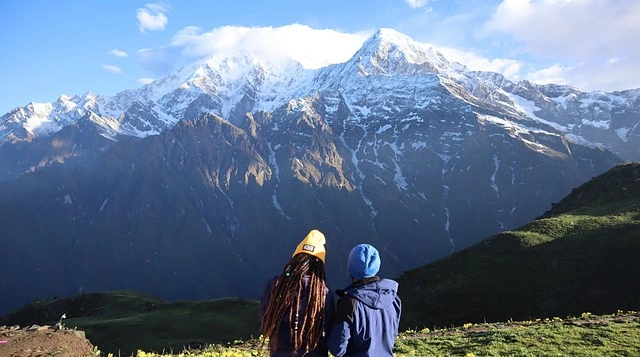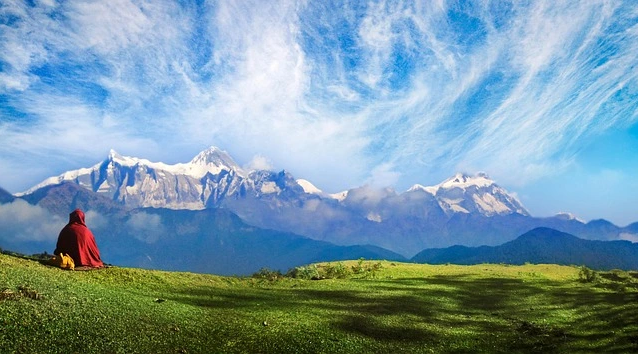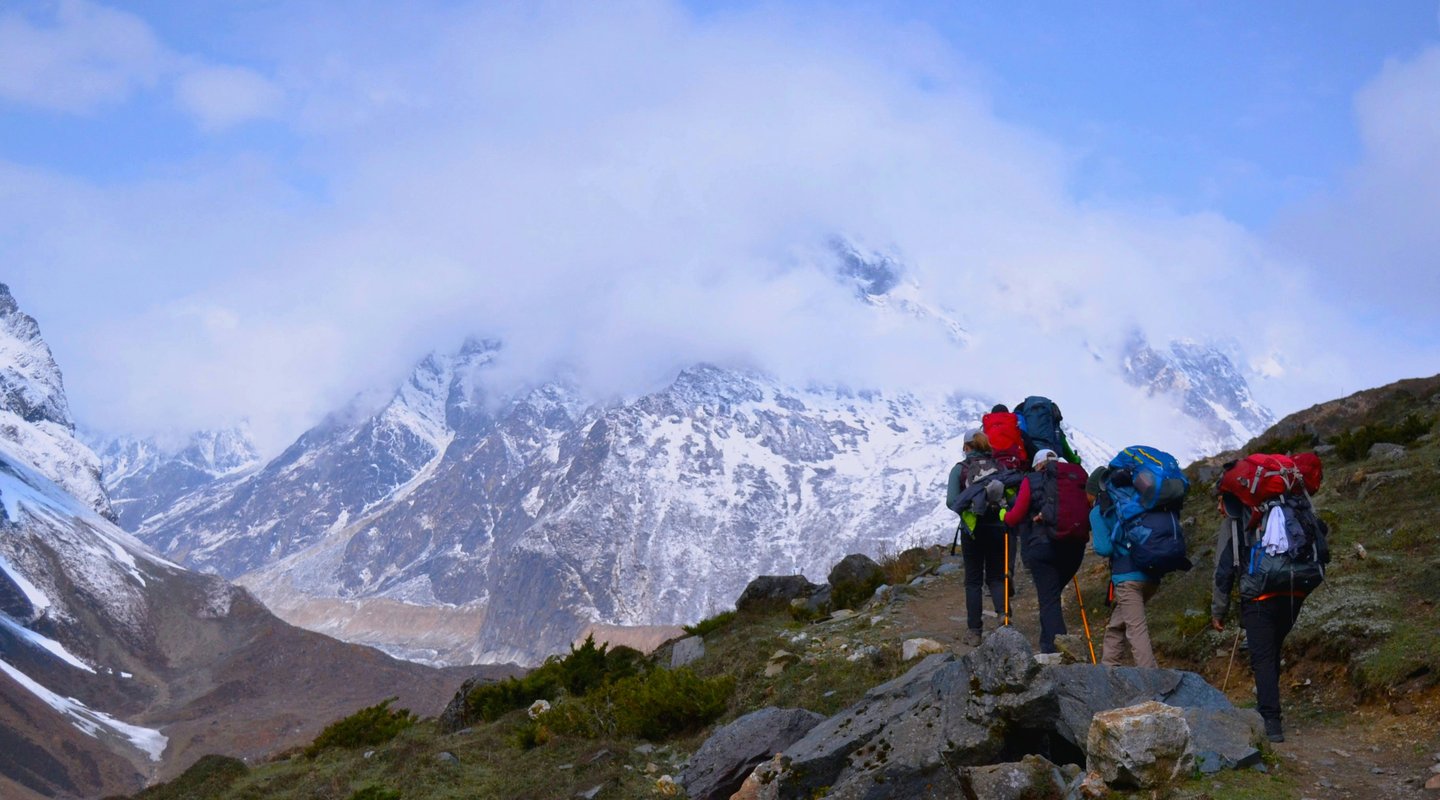What is the best time for the Langtang Valley trek? Complete Seasonal Guide
"The mountains are calling, and I must go." – John Muir
Did you ever imagine hiking Nepal's beautiful Langtang Valley but just can't seem to get your timing right on whipping out your trekking boots? Fear not, you're not alone! Serving as a guide to take visitors on this breathtaking trail for years now, I have to inform you that timing is everything. Although an incredible 70% of hikers pass through during peak season, there are hidden treasures of the valley regardless of what time of year that many hikers never see.
The Langtang Valley Trek—commonly called Nepal's best-kept secret—is a trek that provides spectacular mountain views, untamed culture, and diverse landscapes without the crowds of Everest or Annapurna. Yet your trek can be totally different depending on when you trek.
Here in this ultimate guide, I'll walk you through everything you'd like to know about the best trekking seasons of Langtang Valley. If you're looking for perfect weather, flowering rhododendron flowers, or budget-friendly adventures, you're covered!
Which Month is Best for the Langtang Trek?
Let me cut to the chase: October and November are widely considered the absolute best months for the Langtang Valley Trek. The monsoon has cleared, leaving behind crystal-clear mountain views and stable weather. Days are pleasantly warm (typically 10-15°C/50-59°F), nights are cool but not freezing, and rainfall is minimal.
But that's not the whole story!
March to May offeredmulti-colored rhododendron thickets and fair weather. September is also quite an off-the-beaten-path post-monsoon experience, with greens all around. The winter season too enjoys its robust group of supporters in spite of cold with crisp views.
Your "perfect" month is all about what is most important to you—the best weather, fewer people, cheaper, or specific natural phenomena. Take a closer look at each season to select the best one for your adventure!
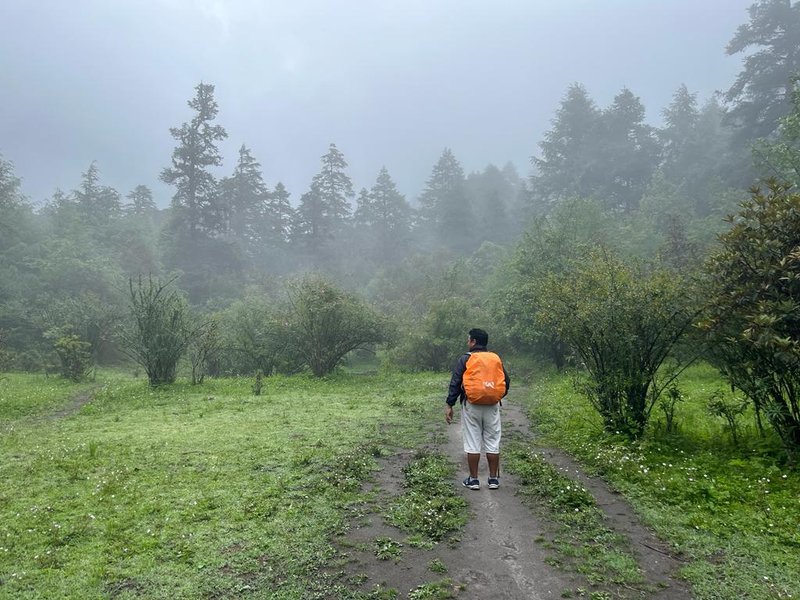
The Four Seasons of Langtang Valley Trek in Nepal: An Overview
Spring (March to May)
Langtang erupts in a riot of color in spring. Rhododendrons are in flower and the valley is dominated by an imposing background of the snow peaks. The temperature increases steadily with the season.
Temperature Range:
- Lower elevations: 15-22°C (59-72°F) in daytime
- Higher elevations: 5-15°C (41-59°F) in daytime
- Night temperatures: 0-10°C (32-50°F), depending on elevation
Precipitation: Light patchy rain, slightly more in May when pre-monsoon humidity increases.
Visibility: Excellent to very good on most days; sometimes hazy afternoons.
Trail Conditions: Mostly dry and firm, with the occasional muddy patch at lower altitudes.
Summer/Monsoon (June to August)
Rain, green landscapes, and difficult times for trekkers are what the monsoon season brings. The trails are slippery, and leeches start to appear at lower altitudes. But the green landscapes and fewer tourists make it a worthwhile experience.
Temperature Range:
- Lower altitudes: 18-25°C (64-77°F) during the day
- Higher altitudes: 10-18°C (50-64°F) during the day
- Night temperature: 5-15°C (41-59°F)
Precipitation: Heavy rainfall, particularly in July and August (250-450mm average per month).
Visibility: Fairly poor due to clouding, although with some clear intervals during the early morning.
Trail Conditions: Slippery, soggy, and with potential for landslides on sections. River crossings are challenging.
Autumn/Fall (September to November)
When the post-monsoon weather settles, there is perfect visibility, and the temperature is mild. The land is still lush green from the just-gone rains and offers unobstructed views of the mountains. This is the best trekking time and for all the good reasons!
Temperature Range:
- Low altitudes: 12-20°C (54-68°F) during the day
- Higher altitudes: 5-15°C (41-59°F) during the day
- Night temperature: -5 to 10°C (23-50°F), decreasing gradually as winter arrives
Rainfall: No rain at all, usually dry and settled.
Visibility: Best—the year's best skies.
Trail Conditions: Dry, well-marked, and easy to walk.
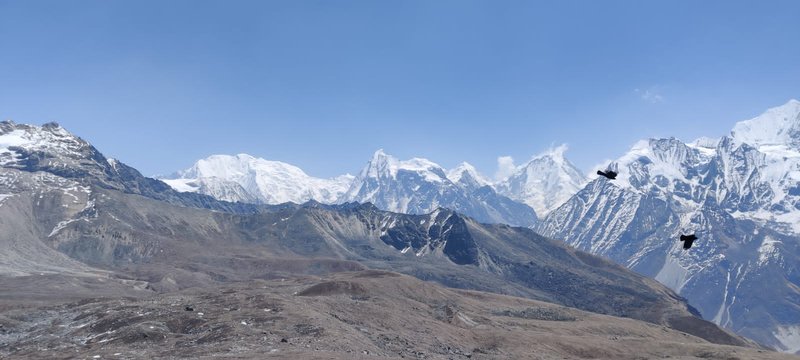
Winter (December to February)
Cold weather and occasional snow at high altitudes are ushered in by winter. Days are very clear, although nights are bitterly cold. The cost? Serene solitude and lovely snow-covered scenery.
Temperature Range:
- Lower elevations: 5-15°C (41-59°F) daytime
- Higher elevations: -5 to 5°C (23-41°F) daytime
- Night temperatures: -15 to 0°C (5-32°F), lowest in January
Precipitation: Very little rain, rare snow above 3,000m.
Visibility: Typically fine, with clean, sharp air.
Trail Conditions: Often snowy high up, with potential ice on shaded parts.
When is the "best" time for you? Considerations Based on Priorities
Each trekker has his or her preferences when trekking to Langtang Valley. Here's what to choose based on what your priority is:
For Perfect Weather Seekers
If your first preference is pleasant and firm weather:
- Best Choice: October to November
- Runner-Up: March to April
October and November are the most guaranteed conditions—clear skies, minimal precipitation, and comfortable temperatures. You get to experience wonderful mountain vistas with no summer heat or winter chill. March and April offer similar predictability with spring blooms added.
For Crowd-Avoiders
If you prefer trails all to yourself:
- Best Choice: December through February
- Runner-Up: June through August
There are fewer travelers in the winter months, so you can have an intimate experience of the mountains and culture. The monsoon also keeps many at bay, although you will have to be geared up for rain and rough conditions.
For Budget Travelers
If you're living on a shoestring budget:
- Best Option: June to August
- Alternative: December to February (except holiday weeks)
Monsoon season also sees the period of low teahouses and guides—occasionally a 30-40% drop from high-season rates. Winter also sees lower rates, though peak holiday periods (particularly Christmas and New Year) bring short-term price increases.
For Photography Enthusiasts
If your ambition is to take incredible photographs:
- Best Choice: October to November for sharp mountain photos
- Second Best: March to April for flowers and mountain pairings
October and November have unbelievable definition for landscape photography with the Langtang Range appearing in sharp relief against a deep blue sky. Spring offers more varied shooting with flowers blooming to provide color foregrounds to mountain backgrounds.
For Botanical Enthusiasts
If flowers thrill you:
- Best Choice: April to May
- Runner-up: September
Mid-spring sees the most spectacular flowering as forests of rhododendron form tunnel after tunnel of pink, red, and white blooms. The post-monsoon landscape in September bursts out in a colorful variety of assorted alpine blooms and richly green foliage.
Pros and Cons by Season
These are the advantages and disadvantages of each season so you can choose:
Spring (March to May)
Advantages:
- Picturesque rhododendron flowers (peaks in April)
- Chill-out; gradually getting warmer weather
- Good views most days
- Moderate tourist crowds (busy, but not peak)
- Cultural benefit: possibility to experience local spring celebrations
Disadvantages:
- Increasing chance of afternoon cloud cover and rain as May approaches
- Some haze an option, especially in afternoons
- More expensive than off-season (though cheaper than autumn)
- Trail conditions are dry to muddy
Summer/Monsoon (June to August)
Advantages:
- Green, lush scenery in their greenest state
- Less expensive accommodation and guide prices
- The much lower crowd on the trails
- A special atmosphere with misty mountains
- Most wildlife activity
Disadvantages:
- Crowded typical heavy rain (daily)
- Poor mountaintop visibility
- Slippery, muddy trails with landslide risk
- Leeches lower down
- Some teahouses shut for monsoon peak season
Autumn/Fall (September to November)
Advantages:
- Stable, clear weather with very little rain
- Superb mountain vistas
- Good weather (not too hot or cold)
- Cultural bonus: large festivals like Dashain and Tihar
- Good condition trails that are not wet
Disadvantages:
- High season with most visitors
- Accommodation and service cost more
- Have to reserve teahouses in advance
- Good viewpoints crowded at sunrise/set
Winter (Dec-Feb)
Advantages:
- Solitude on the trails
- Fantastic snow covered landscapes
- Crystal-clear mountain views
- Lower costs (except holiday weeks)
- Special photo shoots
Disadvantages:
- Very cold temperatures, especially at night
- Snow and ice can close upper passes
- Less daylight hours available for trekking
- Teahouses at higher elevations shut down
- Special equipment for low temperatures.
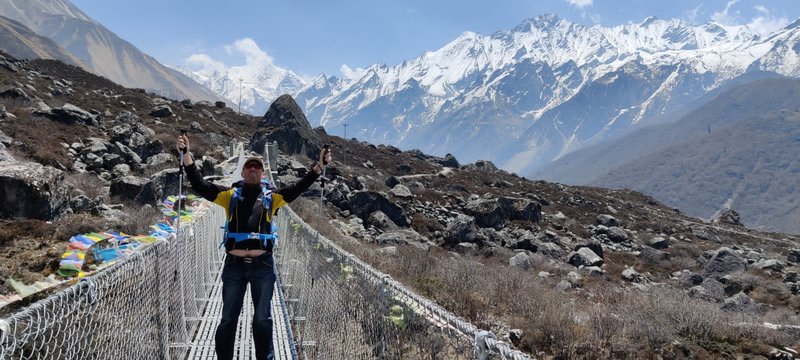
When is the Langtang Valley Trek Most Accessible?
Accessibility depends on both physical trail conditions and logistical considerations:
Physical Trail Accessibility
Langtang Valley Trek is physically accessible throughout the year but with extremely seasonal variation:
- Most Accessible: October-November and March-April when trails are dry, well graded, and snow- or mud-free.
- Moderately Accessible: May, September, and December, when conditions may include spot rain, mud, or light snow but rarely impede passage.
- Challenging Accessibility: June to August (monsoon) as landslides can occasionally block trails and river crossings are more dangerous.
- Peak Difficulty: January and February with deep snow, which can shut upper sections of the trail and passes.
Logistical Accessibility
Aside from physical conditions along the trail, bear the following logistical factors in mind:
- Transportation: Buses run year-round to Syabrubesi (trekking starting point) but with a risk of delay during the monsoon months due to road conditions.
- Accommodation: The majority of teahouses are open from October to April, with some of the higher-altitude lodges closing during winter and monsoon months.
- Guide Availability: The most skilled guides are accessible in the high seasons (October-November and March-April).
- Permit Processing: Permit offices operate year-round but may operate on reduced hours during off-peak seasons.
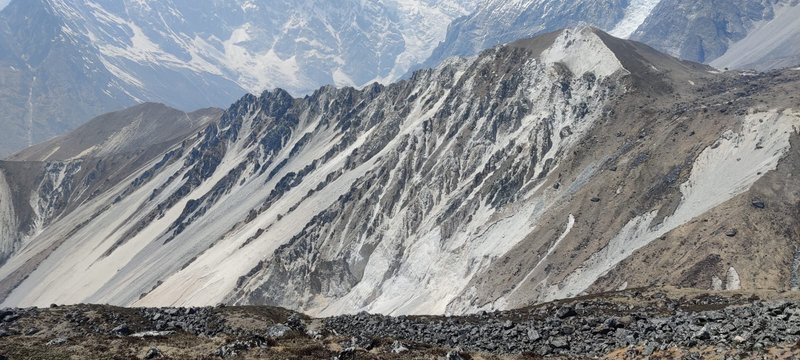
Chasing Blooms and Views: Special Natural Attractions by Month
Each month in Langtang offers unique natural highlights:
January-February
- Snowy landscapes provide winter wonderland setting
- Chilly, clear air provides the year's best visibility
- Frozen waterfalls form natural ice sculptures
- Wildlife viewing is enhanced as animals move down to lower levels
March
- Early rhododendron blooming begins at lower levels
- Snowmelt starts to produce active streams and waterfalls
- Bird activity increases with the start of mating season
- First new growth in the forest emerges
April
- Rhododendron season peaks to color forests with flower tunnels
- Magnolias, primulas, and other spring-flowering species blanket the understory
- Stunning contrast of colorful blooms and snow-capped mountains
- Langur monkeys are active and easier to see
May
- Late-season alpine flowers in their best condition at higher elevations
- Villages are nestled among green terraced fields
- Best views of glaciers before the monsoon clouds roll in
- Maximum number of bird species present
June-August
- Moss-covered forests provide an enchanting environment
- Dramatic cloud cover renders the mountain landscape mystical
- Waterfalls at their maximum flow
- Exotic fungi bloom across the wooded ranges
September
- Post-monsoon scenery at its greenest
- Fall wildflowers start blooming
- Clearest rivers and streams of the year
- Dramatic sunrise hues as humidity decreases
October-November
- Golden fall light across the mountains
- Blue skies make for perfect mountain reflections in lakes
- Fall color starts to show in deciduous forests
- Clearest night skies of the year for stargazing
December
- First snow falls across the higher ranges
- Dramatic cloud inversions in valleys
- Ice sets along streams
- Pure, untouched snow on lesser-used trails.
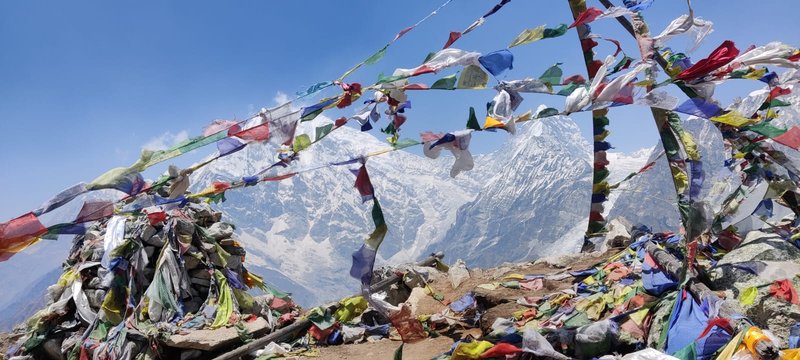
Step-by-Step Guide to Planning Your Langtang Trek by Season
No matter when you choose to trek, proper preparation is essential. Here's a seasonal planning guide to ensure your adventure goes smoothly:
Step 1: Select Your Seasonal Preferences
Before we dive into logistics, ask yourself these questions:
- What type of weather do I prefer to hike in?
- How important is it to me to have unobstructed views of the mountains?
- Do I want to avoid crowds, or do I like the atmosphere of high season?
- Am I on a tight budget, or am I looking for comfort?
- Do I have specific photography or wildlife interests?
- According to the above, decide which season of trekking you would like best according to your responses.
Step 2: Plan for Your Desired Season
For spring trekking (March-May):
- Bring layers to enable warming days and cold nights
- Bring rain gear for spontaneous showers in afternoons
- Bring allergy medication if you suffer from pollen allergy
- Bring sunscreen (spring sun is intense at high altitude)
- Bring polarizing filter camera for flower photo opportunities
For monsoon trekking (June-August):
- Invest in waterproof, good quality gear (jacket, trousers, pack cover)
- Carry quick-drying and spare socks
- Carry leech socks or lower altitude repellents
- Consider trekking poles for muddy and slippery terrain
- Carry dry bags to keep electronics and essential papers dry
- Carry water purification tablets since water sources could be contaminated
For Autumn Treks (Sep-Nov):
- Book accommodation well in advance
- Pack warm sunny weather and increasingly cold nights
- Pack a high quality sleeping bag (rated below 0°C/32°F)
- Bring a buff or face mask for dusty trail sections
- Bring sunglasses and sun protection (autumn sun is fierce)
For winter trekking (December-February):
- Spend on proper cold-weather gear (down jacket, thermal tops)
- Bring a sleeping bag with a rating of -15°C/5°F or warmer
- Bring crampons or microspikes for icy trail sections
- Bring chemical hand and foot warmers
- Bring a thermos for hot drinks
- Bring a four-season tent if camping
Step 3: Seasonal Budget
Your budget needs to be modified for the season:
- Peak Season (Oct-Nov): Increase your off-season daily budget by 20-30%. Budget $25-35 USD per day for teahouse lodging and meals.
- Shoulder Season (Mar-Apr, Sep-Mid-Oct): Budget $20-30 USD per day for teahouse lodging and meals.
- Off-Season (Dec-Feb, May-Aug): Daily budget may be negotiated, and daily budget might be as low as $15-25 USD for teahouse meals and lodging.
Other factors:
- Guide charges remain largely unchanged throughout the year ($25-35 USD/day)
- Transportation charges might be higher in monsoon due to road conditions
- Permit charges remain unchanged throughout seasons
Step 4: Adjust Your Schedule Based on Daylight Seasons
Adjust your trekking schedule every day based on daylight hours in various seasons:
- Summer: 5:30 AM - 7:00 PM (13.5 hours of daylight)
- Winter: 6:30 AM - 5:30 PM (11 hours of daylight)
This affects how much you hike per day:
- Summer, plan 6-8 hours hiking per day
- Winter, cut back to 5-6 hours per day to avoid being on the trails at night
- Monsoon, factor in additional time for harder going on wetter trails.
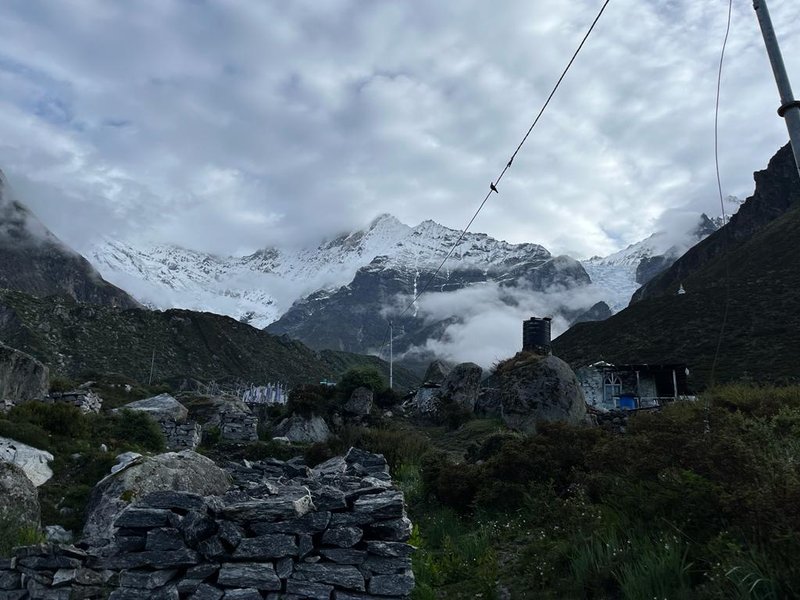
Step 5: Prepare for Seasonal Challenges
There are specific challenges each season presents, however, which require special preparations:
Spring Challenges:
- Intermittent afternoon rain showers
- Risk of entire teahouses in midst of rhododendron jungle
- Increased pollen and dust
Solution: Take the early hike, book accommodations before early afternoon, and have allergy medication as a last resort.
Monsoon Challenges:
- Daily rain showers, although often most heavily falling in afternoons
- Leeches at lower elevation
- Landslides possibilities
- Limited visibility
Solution: Schedule flexibility into your plans, learn some basics of landslide safety, carry a first aid kit and leech removal gear, and make it all waterproof.
Autumn Challenges:
- Crowded trails and teahouses
- Busy trails dust
- Cold nights at over 3,000m
Solution: Book ahead, get the popular sections of the trail off your plate early, and take warm sleep gear.
Winter Challenges:
- Very cold weather, especially overnight
- Snow and ice on trails over 3,000m
- Limited facilities in teahouses
- Shorter days
Solution: Carry proper winter gear, have fundamental snow safety knowledge, inquire about teahouse availability before climbing to higher elevations, and reduce daily distance goals.
Step 6: Pack These Year-Round Essentials Regardless of Season
Packing varies by season, but these items are needed year-round:
- Trekking permit and necessary paperwork
- Personal medications in a first aid kit
- Water filter system
- Headlamp and spare batteries
- Cell phone with maps stored offline
- Cash (no ATMs on the trail)
- Copy of insurance policy
- Sunscreen and minimal toiletries
- Sturdy, well-broken-in hiking boots
- Insulating layer even in summer (nighttime is cold at high altitude).
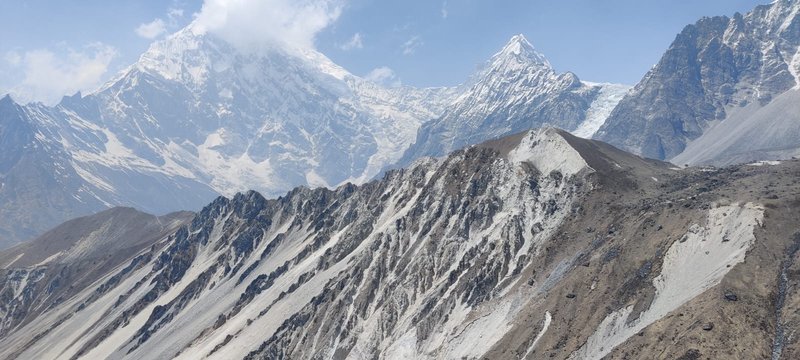
Final Thoughts: Choosing YOUR Perfect Time for Langtang
Having taken so many trekkers up Langtang Valley in each of the seasons, I've learned that there is no seasonally "best" time—merely the best time for YOU.
October and November may have the most reliable weather, but I've had trekkers have life-changing experiences in the midst of monsoon rain or struggling through winter snow. Langtang's magic lies not so much in the conditions you find but more in how you approach the experience.
Depending on whether you wish to be charmed by April's rainbow explosion of rhododendron flowers, see October's new mountain scenery, or experience January's quiet isolation, Langtang Valley guarantees to leave you with memories that you will always treasure. It is simply a matter of choosing your preferred season and being flexible and open-minded about the trek.
Remember that weather at any time of year in the Himalayas is unpredictable. Good humor and adaptability will serve you better than ideal conditions ever could!
So when to undertake the Langtang Valley Trek? When you're ready to set foot on the trail with a sense of respect for the mountains, interest in the culture, and anticipation of the adventure to come.Langtang's ancient peaks await you—whatever the season.
Happy trekking!

